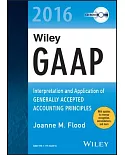Detailed, practical coverage of GAAP, tailored to not-for-profit organizations
Wiley Not-for-Profit GAAP 2016 is a thorough examination of the authoritative standards for measurement, presentation and disclosure as applied to not-for-profit organizations. Due to
these organizations’ unique characteristics, not-for-profit accountants must adhere to specific Generally Accepted Accounting Principles (GAAP). These requirements are complex and ever
evolving, but this single volume brings them together, providing the most up-to-date information available. Flowcharts and diagrams are used to assist the reader’s understanding of the
material. Additionally, a financial statement disclosure checklist facilitates GAAP adherence.
Designed specifically for accountants in public practice and industry, this guide covers requirements from all relevant organizations, including the Financial Accounting Standards Board
(FASB) and Accounting Principles Board (APB). Technical and accounting research bulletins are clearly and concisely summarized, as are all statements of position important to not-for-profit
organizations. Together, these resources makeWiley Not-for-Profit GAAP 2016 a complete reference tool for auditors and financial personnel in the not-for-profit sector.
- Refine basic financial statements, including Financial Position, Activities and Cash Flow
- Tackle not-for-profit-specific issues like fundraising, noncash contributions, affiliations and pledges
- Tailor accounting methods to the specific type of organization, with budgeting, tax reporting and regulatory advice
- Discover how general accounting topics like assets, mergers and liabilities are applied to not-for-profit organizations
Preparers and auditors of not-for-profit accounts must stay up-to-date on the latest GAAP practices to best serve the organization, while complying with all disclosure, reporting and
regulatory requirements.Wiley Not-for-Profit GAAP 2016 provides extensive coverage and practical advice on the latest GAAP, tailored to the not-for-profit organization’s unique needs.





















